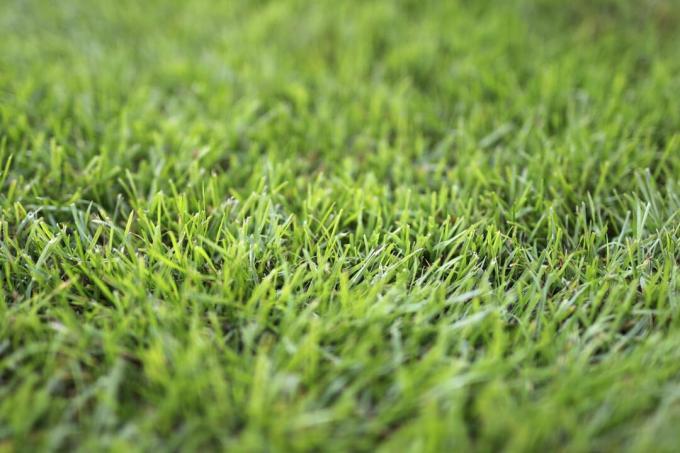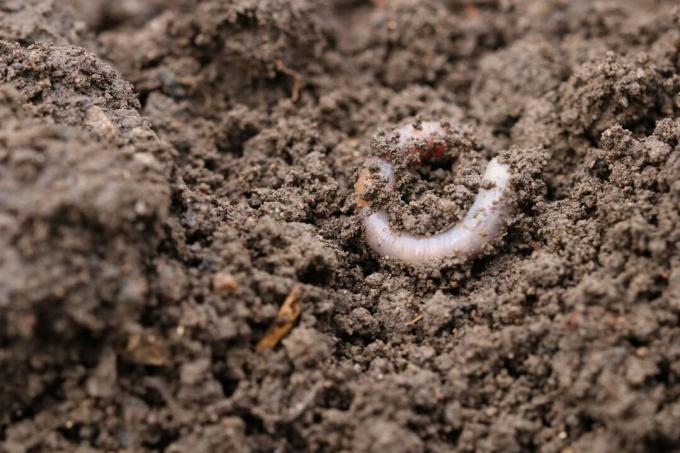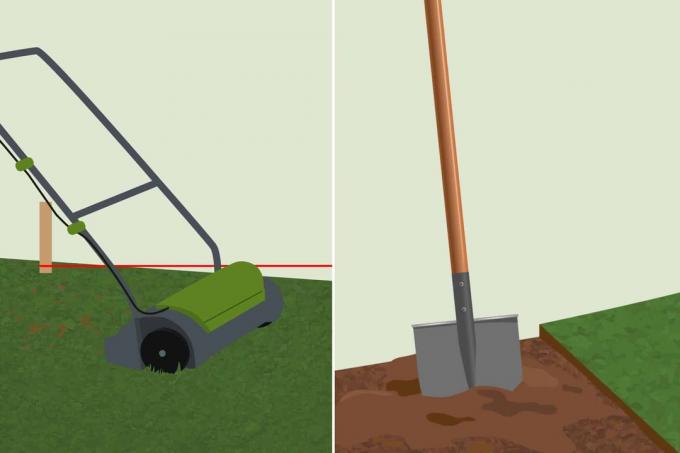

Table of contents
- Which soil is suitable?
- Prepare lawn
- How much lawn soil is necessary?
A new lawn is being laid and now the question arises of how much new soil is needed here. The following article explains what needs to be considered when using lawn soil for turf rolls or sowing.
Which soil is suitable?
If a new lawn is to be created or an existing one renewed, the first thing to do is to check the existing soil. Because not everyone is suitable for a lush, green lawn, which every garden owner actually wants. Therefore, the lawn substrate used should have the following properties:
- Check underground
- mix in compost and sand if the soil is loamy
- add more humus if the soil is sandy
- then the lawn substrate
- high content of compost and humus
- 50% compost
- 30-40% hummus
- Rest of the substrate of sand
Due to the composition, the plants not only get all the nutrients they need right at the beginning The addition of sand loosens the soil and can be used as drainage serve. In this way, excess water can drain off quickly and there is no waterlogging. In this way, the new plants from the seed can develop optimally and a rolled turf can grow well.
Tip:
You can make the lawn substrate yourself if you don't want to buy a ready-made mixture from the shops. Otherwise, the lawn substrate can be bought in liters from well-stocked garden stores.
Prepare lawn

It is often the case that the area on which the lawn is to be laid is not completely straight. Then the subsoil must first be processed and leveled so that there are no more holes. In addition, the lower layer should be prepared as described above. Only then comes the layer of prepared or purchased lawn soil. However, for all lawns, the following can apply when preparing the topsoil:
- loosen loamy soil with quartz or river sand
- about 8-10 liters of sand per 100 m² of surface
- no humus is needed here
- Work bark humus into sandy, light soil
- about 8-10 liters of humus per 100 m² area
- put the prepared substrate for lawn on this surface
How much lawn soil is necessary?
Lawn plants are not deep-rooters. Therefore, the substrate used, which is added to the existing topsoil, does not have to be applied very high. So it is completely sufficient if this is created between 0.5 and 1.5 cm high. This also depends on whether the turf is laid with soil or the lawn is seeded. When sowing, the layer should be higher than with turf. Then, regardless of this preparation, the following amount of substrate is applied:
- 10 liters of ready-made or self-made lawn soil per m² area
- distribute the lawn soil evenly
Tip:
After the substrate has been applied, you should allow the soil to sit for about two to three weeks before abandoning sod seeding or sod turf. In this way, the surface can settle accordingly and can also be straightened again at various points if holes have arisen, for example due to falling rain.
 Home editorial office
Home editorial office
Learn more about lawn care

Leveling out unevenness in the lawn: this is how it works
Unevenness in the lawn is annoying and poses a danger to gardeners, playing children and pets. There are a number of methods that can be used to level the lawn. We present them to you in our guide.

Leveling the lawn: how to smooth uneven surfaces
Dents and holes in the lawn are unsightly. We will show you step by step how to smooth uneven areas in the lawn again.

Algae in the garden | Lawn is slippery: what to do?
Algae love rainy days. Can the water seep badly into the ground, even better! The green, slippery mass is not only not a pretty sight, but also a danger for the lawn. Only those who act preventively and correctly in acute cases can avoid permanent damage.

Fighting fungi in the lawn | 10 tips against fungal infestation
Mushrooms in the lawn are not uncommon but annoying and sometimes even dangerous. This is especially true if the garden or green space is also used by pets and children. Here we will show you how to combat fungal infestation.

Aerate the lawn | Before or after mowing?
Sun, water, fertilizer and air are necessary for the lawn to grow. If the lawn does not get enough air, it cannot grow properly. We clarify when the right time to ventilate the lawn is.

Mulching with lawn clippings: 13 things to consider
Keeping the lawn short is a must for many hobby gardeners. However, if the lawn mower does not have a mulching function so that the grass clippings can remain on the lawn, the question arises as to where to put the waste. Because the compost heap is not a good solution here.
